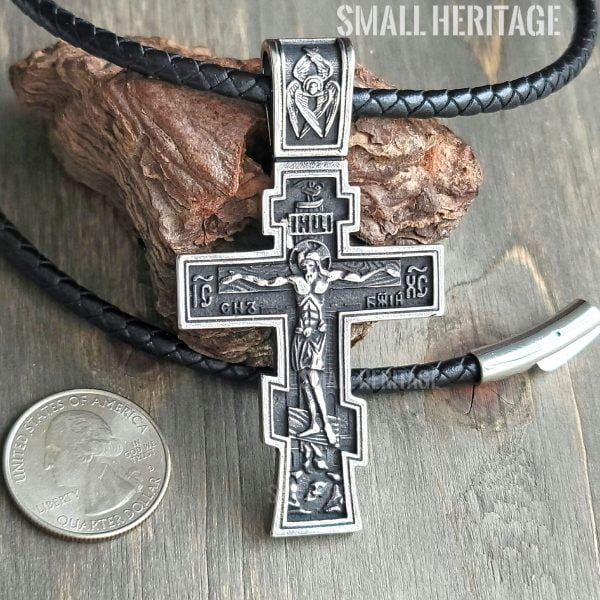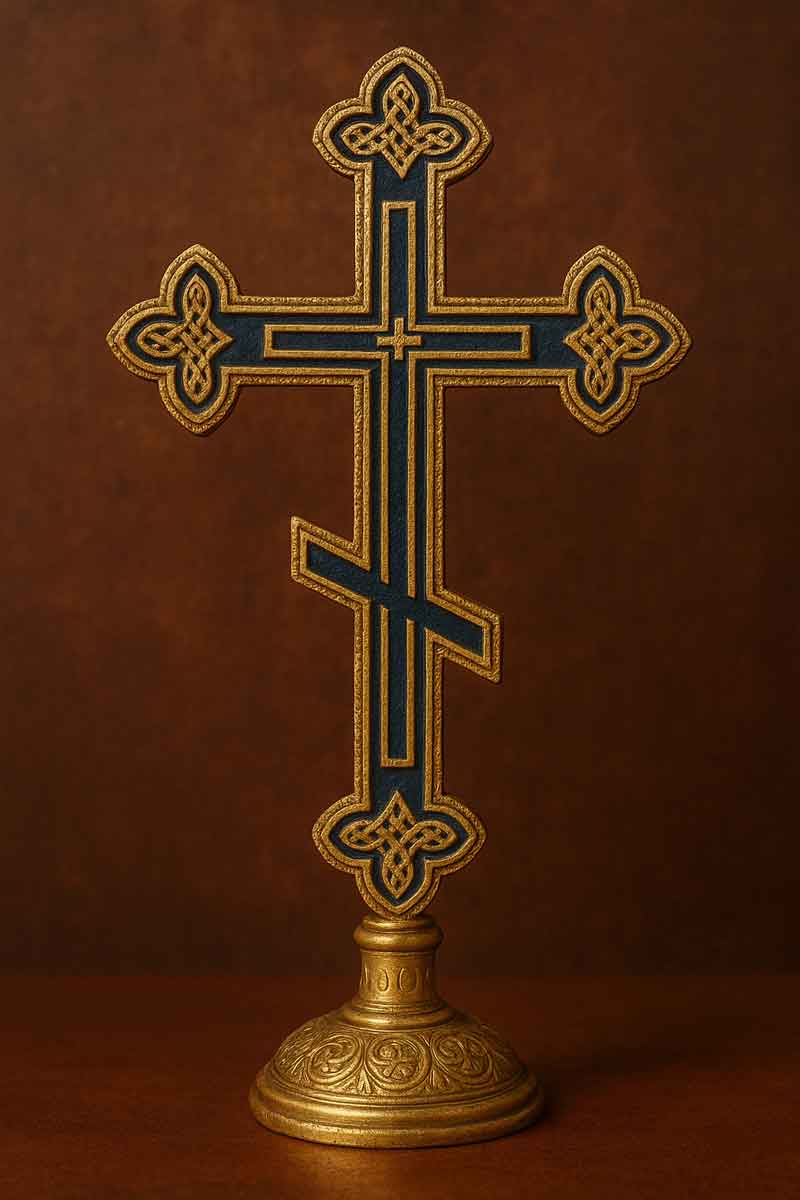The cross is one of the most universal and enduring symbols in human history. For Christians, it represents both the suffering and the triumph of Christ, serving as a bridge between faith, art, and culture. While all branches of Christianity honor the cross, each tradition has developed its own distinct forms and meanings. Among these, the Orthodox Christian Cross stands out for its rich symbolism and its role in connecting faith across cultures.
1. The Cross in Early and Orthodox Christianity
The Cross Before Constantine: From Persecution to Victory
In the first centuries of Christianity, the cross was not publicly displayed. It was seen as a tool of Roman execution, carrying the stigma of shame. Only after Emperor Constantine’s conversion in the 4th century did the cross become a public emblem of faith. This transformation marked the beginning of the cross as a central Christian symbol.
Why the Orthodox Cross Has Three Bars
The Orthodox Cross is distinct from the Western crucifix. It typically features three horizontal bars: the top representing the inscription above Christ’s head (“INRI”), the middle as the bar of crucifixion, and the lower slanted bar symbolizing both judgment and mercy. This design captures theological depth and distinguishes Orthodox symbolism from other Christian traditions.
Symbolism of the Slanted Footrest
The slanted bottom bar is perhaps the most unique element of the Orthodox Cross. It points upward toward the repentant thief who found salvation and downward toward the unrepentant thief, reminding the faithful of the eternal choice between life and condemnation. This element highlights Orthodoxy’s emphasis on divine justice and human free will.
Differences Between Orthodox, Catholic, and Protestant Crosses
While the Catholic Church emphasizes the crucifix with Christ’s body displayed, symbolizing sacrifice, Protestant traditions often prefer a plain cross as a sign of resurrection. The Orthodox Cross, with its layered symbolism, carries both suffering and triumph, inviting believers to reflect deeply on the mystery of salvation.
2. Crosses Across Cultures
Byzantine Roots and Their Global Spread
The Orthodox Cross as we know it took shape in Byzantium, where art, theology, and imperial power merged. From Constantinople, its design spread across the Eastern Christian world, influencing countless cultures for centuries.
Slavic and Russian Orthodox Cross Traditions
In Slavic lands, especially Russia, the Orthodox Cross became a national symbol. Worn on churches, banners, and jewelry, it represented both the Orthodox faith and cultural identity. Its widespread use cemented the three-barred cross as a defining emblem of Slavic Orthodoxy.
Armenian Crosses and the Art of Khachkars
Armenia, the first Christian nation, developed its own unique style of crosses. The Armenian Cross, often carved into khachkars (cross-stones), combined intricate lace-like artistry with deep spiritual meaning. These stone monuments served as both devotional objects and cultural landmarks, uniting community, memory, and faith.
Coptic and Ethiopian Expressions of the Cross
In North and East Africa, the Coptic and Ethiopian Churches developed their own versions of the cross, often featuring circular or interwoven designs. These reflected local artistic traditions while maintaining the central Christian symbolism of redemption and eternal life.
3. The Cross as Faith and Devotion
The Role of the Cross in Orthodox Worship and Daily Life
For Orthodox Christians, the cross is more than a symbol; it is a constant presence in worship. From processional crosses to hand blessings by priests, it appears in every aspect of liturgy. The faithful also make the sign of the cross during prayer, integrating the symbol into daily devotion.
Wearing the Cross: Tradition and Identity
Wearing a cross necklace has been an Orthodox tradition for centuries. In many Orthodox cultures, children are given a cross at baptism, meant to be worn throughout their life as a sign of protection and faith. This practice continues today, symbolizing both personal devotion and cultural continuity.
Cross Jewelry Through the Centuries
Beyond its spiritual meaning, cross jewelry has always been a form of artistry. Byzantine craftsmen created intricate golden crosses, while Armenian and Russian jewelers developed regional styles that blended faith with beauty. These traditions passed through generations, enriching Christian material culture.
The Orthodox Cross Necklace Today as a Living Symbol

In modern times, many believers continue to carry their faith in daily life through sacred jewelry. An Orthodox Cross Necklace is not merely an accessory; it is a reminder of spiritual identity, linking wearers to centuries of tradition. Whether handcrafted in silver or gold, such pieces embody both devotion and heritage, making them meaningful expressions of living faith.
The cross is a universal Christian symbol, yet its forms reflect the diversity of cultures that embraced it. The Orthodox Cross, with its unique design and theological richness, connects believers across Byzantium, Russia, Armenia, and beyond. From khachkars to personal jewelry, it remains a bridge between history and the present, reminding the faithful that symbols of faith are also carriers of culture, memory, and identity.

